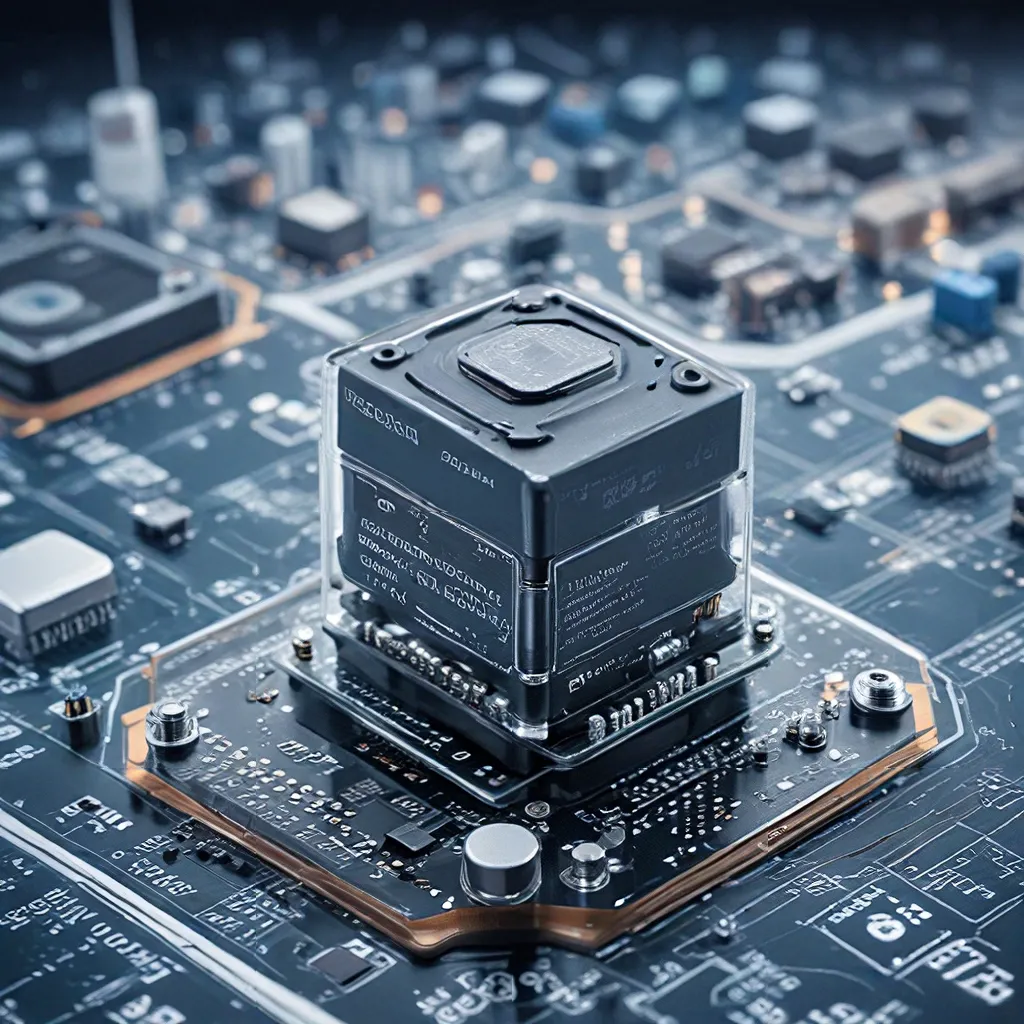
Unlocking the Potential of Sensor Networks in the IoT Era
The rapid advancements in sensor technology have been a driving force behind the exponential growth of the Internet of Things (IoT) ecosystem. Sensors, the fundamental building blocks of IoT, have evolved significantly in terms of their reliability, accuracy, and responsiveness, enabling a wide range of innovative applications across various industries.
In this article, we will explore the latest sensor design innovations and their impact on enhancing the performance and capabilities of sensor networks and IoT applications.
Improving Sensor Reliability: Overcoming Environmental Challenges
One of the key challenges in sensor network design is ensuring reliable and consistent data acquisition, particularly in harsh environmental conditions. Researchers have been actively developing innovative sensor materials and structural designs to address this issue.
Recent studies have demonstrated the use of self-healing and self-cleaning sensor materials, which can automatically repair minor damages or remove contaminants, ensuring uninterrupted data collection even in challenging environments. These advancements have significantly improved the longevity and durability of sensor networks, making them more resilient to external factors.
Furthermore, redundancy and fault-tolerance have become integral design considerations in sensor networks. Implementing multiple sensor nodes and distributed data processing capabilities can help mitigate the impact of individual sensor failures, enhancing the overall reliability of the system.
Enhancing Sensor Accuracy: Pushing the Boundaries of Precision
Accurate data acquisition is crucial for the effectiveness and usefulness of sensor networks and IoT applications. Researchers have been exploring innovative techniques to improve the precision and sensitivity of sensor devices.
Advanced sensor calibration methods, machine learning algorithms, and data fusion techniques have been instrumental in enhancing the accuracy of sensor readings. By combining data from multiple sensors and leveraging sophisticated analytical tools, sensor networks can now provide more reliable and comprehensive information, enabling more informed decision-making and enhanced data-driven insights.
Additionally, the development of nano-scale and micro-electromechanical system (MEMS) sensors has revolutionized the field of sensor design. These miniaturized sensor devices offer exceptional precision, sensitivity, and energy efficiency, making them ideal for a wide range of IoT applications, from wearable health monitoring to smart infrastructure monitoring.
Improving Sensor Responsiveness: Enabling Real-Time Decision-Making
In the fast-paced world of IoT, the responsiveness of sensor networks is crucial for timely decision-making and real-time data-driven actions. Sensor designers have been focusing on enhancing the reaction time and data processing capabilities of sensor nodes to meet the growing demands of IoT applications.
Advanced sensor communication protocols and edge computing architectures have played a pivotal role in improving sensor responsiveness. By enabling low-latency data transmission and distributed data processing, sensor networks can now provide immediate insights and rapid response to changes in the environment or system conditions.
Furthermore, the integration of machine learning and artificial intelligence algorithms at the sensor level has empowered sensor nodes with autonomous decision-making capabilities. This allows sensor networks to adapt to dynamic situations, optimize their performance, and trigger appropriate actions in real-time, without the need for constant human intervention.
Securing Sensor Networks: Protecting the IoT Ecosystem
As sensor networks become increasingly ubiquitous in IoT applications, the security of these systems has become a critical concern. Sensor designers and IoT experts have been working to develop robust security measures to safeguard sensor networks from various threats, such as cyber attacks, data breaches, and unauthorized access.
Strategies like encryption, secure communication protocols, and access control mechanisms have been implemented to enhance the confidentiality, integrity, and availability of sensor data. Additionally, blockchain and distributed ledger technologies have emerged as promising solutions for securing sensor networks, providing tamper-proof data storage and decentralized access control.
Moreover, edge computing and fog computing architectures have played a significant role in improving the security of sensor networks. By processing and analyzing sensor data closer to the source, these approaches reduce the attack surface and minimize the risk of data breaches, ensuring the privacy and protection of sensitive information.
Optimizing Sensor Energy Efficiency: Powering the IoT Future
The energy efficiency of sensor networks is a crucial factor in the widespread adoption and sustainability of IoT applications. Sensor designers have been exploring innovative strategies to minimize the power consumption of sensor nodes, enabling long-term and autonomous operation without the need for frequent battery replacements.
Advancements in energy harvesting technologies, such as solar, thermal, and kinetic energy harvesters, have allowed sensor nodes to self-power themselves, reducing their reliance on traditional battery sources. Additionally, the development of ultra-low-power sensor electronics and energy-efficient communication protocols have further enhanced the battery life and operational lifetime of sensor networks.
Furthermore, adaptive and predictive power management algorithms have been integrated into sensor nodes, enabling them to dynamically adjust their power consumption based on environmental conditions, task requirements, and available energy sources. This intelligent power management ensures that sensor networks can operate efficiently and autonomously for extended periods, supporting the scalability and sustainability of IoT ecosystems.
The Future of Sensor Networks: Unlocking New Possibilities
As the Internet of Things continues to evolve, the sensor design innovations discussed in this article are paving the way for a future where sensor networks will play an increasingly vital role in a wide range of applications, from smart cities and industrial automation to healthcare and environmental monitoring.
By enhancing the reliability, accuracy, and responsiveness of sensor networks, these advancements are unlocking new possibilities for data-driven decision-making, real-time monitoring, and autonomous control. As sensor networks become more secure, energy-efficient, and adaptable, they will enable the seamless integration of IoT technologies into our everyday lives, transforming the way we interact with the world around us.
Readers interested in exploring the latest developments in sensor networks and IoT can visit the sensor-networks.org website, which serves as a hub for industry insights, research updates, and innovative case studies.